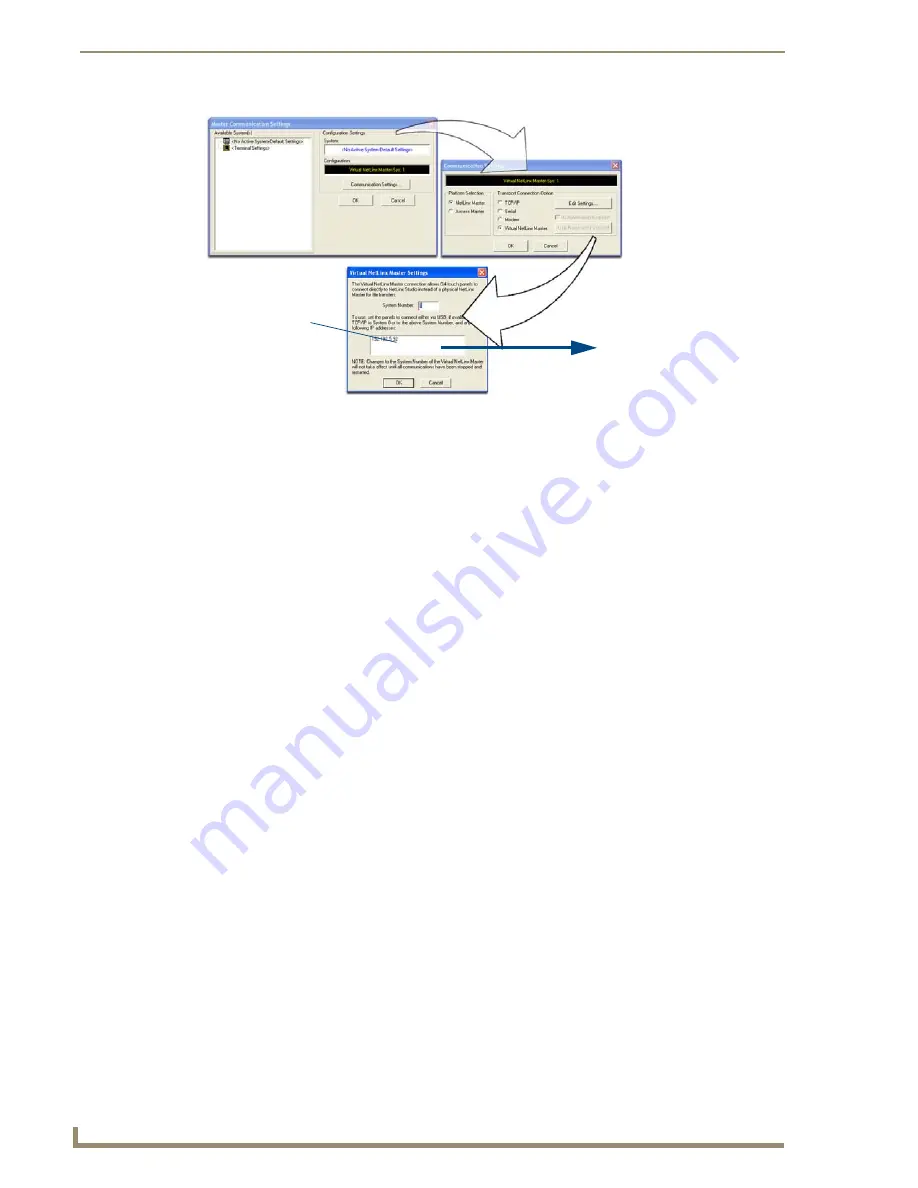
4.
Click the
Communications Settings
button to open the Communications Settings dialog.
5.
Click on the
NetLinx Master
radio button (
from the Platform Selection section
) to indicate that you
are working as a NetLinx Master.
6.
Click on the
Virtual Master
radio box (
from the Transport Connection Option section
) to indicate
you are wanting to configure the PC to communicate with a panel. Everything else such as the
Authentication is greyed-out because you are not going through the Master’s UI.
7.
Click the
Edit Settings
button (
on the Communications Settings dialog
) to open the Virtual NetLinx
Master Settings dialog (FIG. 40).
8.
From within this dialog enter the System number (
default is 1
) and note the IP Address of the target
PC being used as the Virtual Master. This IP Address can also be obtained by following these
procedures:
On your PC, click
Start
>
Run
to open the Run dialog.
Enter
cmd
into the Open field and click
OK
to open the command DOS prompt.
From the
C:\>
command line, enter
ipconfig
to display the IP Address of the PC. This
information is entered into the
Master IP/URL
field on the panel.
9.
Click
OK
three times to close the open dialogs, save your settings, and return to the main NetLinx
Studio application.
10.
Click the
OnLine Tree
tab in the Workspace window to view the devices on the Virtual System.
The
default System value is
one
.
11.
Right-click on the
Empty Device Tree/System
entry and select
Refresh System
to re-populate the
list.
12.
Connect the terminal end of the PS4.4 power cable to the 12 VDC power connector on the side of
the stand-alone touch panel.
13.
After the panel powers-up, press and hold the two lower buttons on both sides of the display (
for 3
seconds
) to continue with the setup process and proceed to the Setup page.
14.
Select
Protected Setup
>
System Settings
(located on the lower-left) to open the System Settings
page (FIG. 41).
FIG. 40
Enter this IP
into the
Master IP/URL
field on the
System Settings
page
IP Addresses of computer
(also obtained by using the
Start
>
Run
>
cmd
command)






























